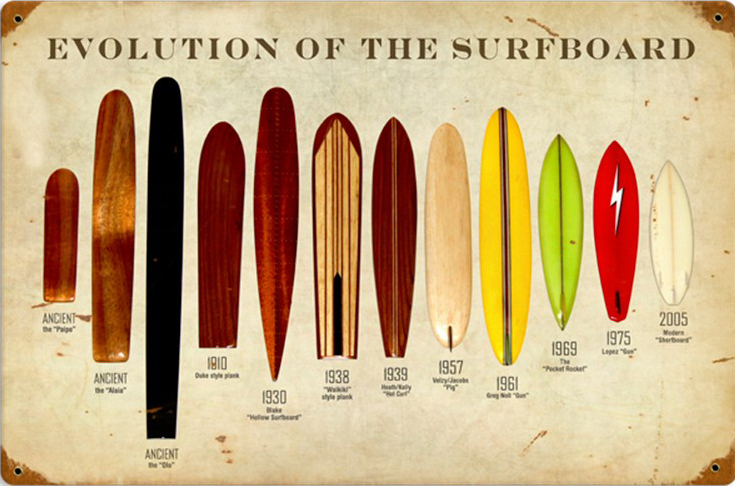3D printing research led by Marc in het Panhuis at the University of Wollongong, Australia, is helping surfers find the perfect ride. By applying 3D printer technology to fins used to steer the board, Panhuis and his team are opening up the material possibilities of surfing to new composite levels.
Surfboard evolution
In the search for the perfect performance, surfboards have evolved to into a variety of shapes, suited to different types of wave, and the rider’s preference.

In addition to the body of the board, the fins used to steer it through the water have become an entirely customizable experience.
In an article for academic news site The Conversation Panhuis writes,
Fins never used to be disposable, at least not for most recreational surfers. These days, however, almost every surfboard (either custom made or bought from a shop) is sold without fins. The fins have become a separate commodity that surfers add to their surfboard.
The range of fins now available to surfers come in a variety of different thicknesses, made stiffer for larger waves, or thinner for the smaller surf. Commercially, these fins are made in batches using injection molding. Though thickness changes, the material variety, especially where composites are concerned is still fairly limited. And custom designs come at a price.

3D printing drops in
Working with 3D printers, Panhuis and his team are better able to explore alternative materials for cheaper custom fin production, including composites of ABS, thermoplastic resins, fibre glass and carbon fibre reinforced plastics.

Speaking in a video clip from the University of Wollongong on Youtube, Panhuis explains how CAD flexibility and 3D printing has the edge over commercial production of fins. He says,
…the difference lies in the fact that we can print fins very fast, and we can make changes to the design […] so on a day’s cycle, we can through 3 or 4 different sets of designs of fins […] we can design something, and then a few hours later we have 3D printed fins coming out of our printer, and they’re ready to work when they come off the printer bed.
Surf’s up for the future
Continuing the research, the Wollongong team look towards validation of 3D printed fins matching the performance of commercially available counterparts. With companies like Red Bull looking into the possibilities of the technology, it may only be a matter of time before 3D printed fins reach the market. Future boards and fins from Wollongong could even be made from materials produced as part of the university’s dedicated additive manufacturing PhDs.
Research on Additive Manufacturing, Modeling and Performance Evaluation of 3D Printed Fins for Surfboards from the team at the University of Wollongong is available to read online in the journal MRS Advances. It is co-authored by Reece D. Gately, Stephen Beirne, Geoff Latimer, Matthew Shirlaw, Buyung Kosasih, Andrew Warren, Julie R. Steele, and Marc in het Panhuis.
For all the latest 3D printing news and research subscribe to our free newsletter. If you want to join the conversation then follow the most popular social media accounts in the 3D printing industry.
Featured image shows: a surfer trying out custom 3D printed fins. Image via University of Wollongong on YouTube.


